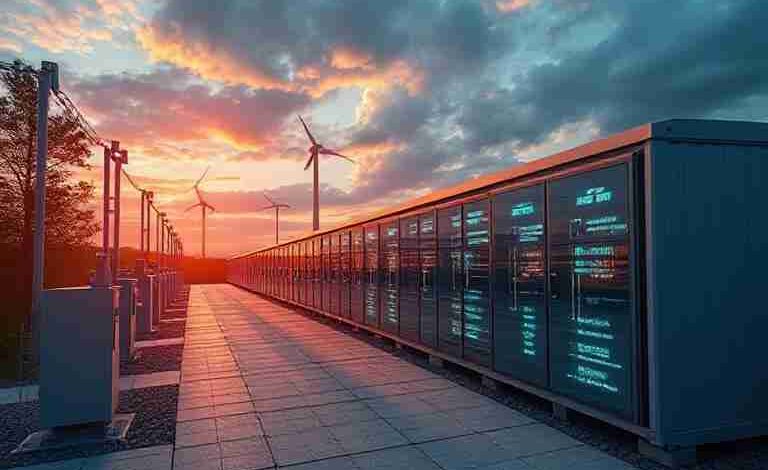Enerstor: The Future of Energy Storage and Management

In today’s rapidly evolving energy landscape, the quest for efficient, sustainable, and reliable power solutions has become more urgent than ever. Enter enerstor, a term that’s gaining traction among industry insiders, tech enthusiasts, and eco-conscious consumers alike. But what exactly is enerstor, and why should you care? Let’s dive into this fascinating world, unpack what enerstor truly means, and explore how it’s transforming the way we generate, store, and use energy.
What is Enerstor? Breaking Down the Concept
At its core, enerstor refers to innovative systems or devices designed to store energy efficiently for later use. Think of it as a high-tech battery — but with the potential to do much more. Unlike traditional batteries, enerstor solutions often encompass a variety of storage technologies, including advanced electrochemical cells, thermal storage, and even mechanical systems like flywheels.
In recent years, the term has evolved beyond just energy storage hardware. Today, enerstor embodies the entire ecosystem of managing energy flows—balancing supply and demand, optimizing renewable integration, and ensuring grid stability. It’s a comprehensive approach that combines hardware, software, and smart algorithms to create a seamless energy experience.
Why is enerstor important? Because it addresses one of the biggest hurdles of renewable energy: variability. Solar and wind power are intermittent, producing energy only when the sun shines or the wind blows. Enerstor systems help smooth out these fluctuations, making renewable sources more practical and reliable.
The Evolution of Enerstor Technologies
From Traditional Batteries to Smart Storage
Historically, energy storage was synonymous with lead-acid batteries — bulky, short-lived, and limited in capacity. As technology advanced, lithium-ion batteries emerged as the gold standard, powering everything from smartphones to electric vehicles. But even these cutting-edge batteries have limitations, such as high costs, safety concerns, and environmental impacts.
Enter newer, more sophisticated enerstor solutions. Solid-state batteries, flow batteries, and hybrid systems now promise safer, longer-lasting, and more environmentally friendly options. For instance, flow batteries store energy in liquid electrolytes, allowing for scalable capacity and longer operational life, making them ideal for grid-scale applications.
The Role of Software and AI in Enerstor
Modern enerstor systems aren’t just hardware; they’re intelligent ecosystems. Advanced software platforms leverage artificial intelligence and machine learning to optimize energy storage and dispatch. These systems analyze real-time data—weather forecasts, energy prices, grid conditions—and make autonomous decisions to maximize efficiency.
For example, during peak sunlight hours, an enerstor system might store excess solar energy, then release it during evening peaks when demand is highest. This dynamic management reduces reliance on fossil fuels, cuts costs, and enhances grid stability.
Emerging Trends in Enerstor Development
Several key trends are shaping the future of enerstor technology:
- Decentralization: Moving away from centralized power plants to distributed storage units at homes and businesses.
- Hybrid Systems: Combining different storage technologies for optimized performance.
- Integration with IoT: Connecting enerstor devices to the Internet of Things (IoT) for real-time monitoring and control.
- Sustainability Focus: Developing eco-friendly, recyclable storage solutions to minimize environmental impact.
These trends promise a more resilient, flexible, and sustainable energy system, where enerstor plays a pivotal role.
Why Enerstor Matters for Consumers and Businesses
Enhancing Energy Independence
For homeowners and small businesses, enerstor systems offer a way to break free from rising energy costs and unreliable grids. Installing a home eneerstor paired with solar panels enables you to store sunlight during the day and use it at night, reducing your dependence on the grid.
This independence isn’t just about saving money; it’s also about resilience. During blackouts or extreme weather events, a well-designed enerstor system can keep critical appliances running, providing peace of mind.
Cost Savings and Economic Benefits
On a larger scale, enerstor translates into significant economic advantages. By balancing supply and demand, storage systems help utilities avoid costly peak-time generation. They also enable the integration of more renewables, which tend to be cheaper in the long run.
Furthermore, governments worldwide are introducing incentives, tax breaks, and subsidies for energy storage installations. These financial incentives make adopting eneerstor solutions more accessible and attractive for both residential and commercial sectors.
Supporting a Greener Future
Perhaps most compelling is enerstor’s role in fighting climate change. By facilitating higher penetration of renewables, energy storage reduces reliance on fossil fuels, lowering greenhouse gas emissions. As countries commit to net-zero goals, eneerstor is poised to become an essential component of sustainable energy strategies.
Practical Applications of Enerstor in Today’s World
| Application Area | How Enerstor Makes a Difference | Real-World Example |
|---|---|---|
| Residential Solar Storage | Stores excess solar energy, reduces grid dependency | Tesla Powerwall at a suburban home |
| Commercial & Industrial | Manages energy loads, reduces operational costs | Data centers deploying large-scale storage |
| Grid Stabilization | Balances supply and demand, prevents blackouts | Utility-scale battery farms in Europe |
| Emergency Backup | Provides power during outages | Hospitals and emergency services backup |
| Electric Vehicle Charging | Supports fast charging stations, manages grid load | EV charging hubs in urban centers |
Real-World Impact: Case Studies
- Tesla’s Megapacks in Australia: These large-scale batteries have helped stabilize the grid during peak demand and integrate more renewable energy sources.
- South Korea’s Hanwha Energy Storage: Combining solar and storage for cost-effective power supply, reducing reliance on imported fuels.
- California’s Community Storage Projects: Localized systems that empower neighborhoods to generate and store their own energy, fostering community resilience.
The Road Ahead: What’s Next for Enerstor?
Looking forward, the trajectory of enerstor technology is promising. Advancements in material science are leading to batteries with higher energy densities and longer lifespans. Meanwhile, the integration of AI and IoT will make energy systems smarter, more autonomous, and more efficient.
On the policy level, governments are increasingly recognizing the importance of energy storage in achieving climate goals. Investments in research, development, and infrastructure are expected to accelerate, making enerstor solutions more affordable and widespread.
Moreover, the rise of decentralized energy markets could see consumers becoming prosumers—both producing and storing energy—thanks to affordable and reliable eneerstor devices. This shift could democratize energy, turning households and small businesses into key players in the green energy revolution.
Final Thoughts: Why You Should Keep an Eye on Enerstor
In essence, enerstor isn’t just a buzzword; it’s a cornerstone of the modern energy transition. Whether you’re a homeowner looking to cut energy costs, a business aiming to reduce carbon footprint, or a policymaker shaping future energy policies, understanding and harnessing eneerstor technologies can make a real difference.
As the world moves toward cleaner, smarter, and more resilient energy systems, eneerstor will be at the heart of this transformation. It’s an exciting time for energy innovation, and staying informed about developments in eneerstor technology can help you make smarter choices—be it for your home, your business, or your community.
FAQs About Enerstor
Q: Is enerstor just another fancy battery?
Not exactly. While batteries are a big part of eneerstor solutions, the term also includes systems that combine hardware, software, and smart technology to optimize energy use and storage.
Q: Can I install an enerstor system at home?
Absolutely! Many companies now offer residential energy storage solutions, especially when paired with solar panels. It’s a growing market with increasing affordability.
Q: How much does a typical enerstor system cost?
Prices vary depending on capacity and technology, but smaller residential systems can range from $5,000 to $15,000, while larger commercial setups can cost hundreds of thousands.
Q: Will enerstor help me save money?
Yes, by storing cheaper off-peak energy and reducing reliance on high-cost peak energy, enerstor systems can lower your energy bills over time.
Q: Is enerstor good for the environment?
Definitely. It promotes the use of renewable energy, reduces fossil fuel dependence, and can lower overall carbon emissions.
In Conclusion
Enerstor stands at the crossroads of innovation and necessity. It’s a game-changer that promises a cleaner, more resilient, and cost-effective energy future. As technology advances and adoption grows, understanding eneerstor will become increasingly important for consumers, businesses, and policymakers alike. Keep an eye on this space—it’s where the future of energy is being built today.



